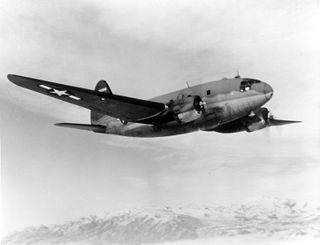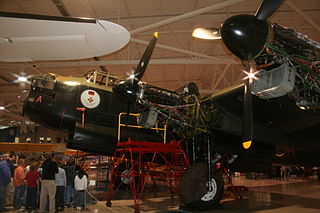Related Research Articles

Messerschmitt AG was a German share-ownership limited, aircraft manufacturing corporation named after its chief designer Willy Messerschmitt from mid-July 1938 onwards, and known primarily for its World War II fighter aircraft, in particular the Bf 109 and Me 262. The company survived in the post-war era, undergoing a number of mergers and changing its name from Messerschmitt to Messerschmitt-Bölkow-Blohm before being bought by Deutsche Aerospace in 1989.
The Brewster Aeronautical Corporation was a North American defense contractor that operated from the 1930s until the end of World War II.
The Curtiss-Wright Corporation is an American-based, global diversified product manufacturer and service provider for the commercial, industrial, defense, and energy markets. Created in 1929 from the consolidation of Curtiss, Wright, and various supplier companies, by the end of World War II it was the largest aircraft manufacturer in the United States, supplying whole aircraft in large numbers to the U.S. Armed Forces. It has since evolved away from final assembly of finished aircraft, becoming a component manufacturer specializing in actuators, aircraft controls, valves, and surface-treatment services. It also is a supplier to commercial nuclear power, nuclear navy systems, industrial vehicles and to the oil and gas industries. It has an integrated supply chain and an extensive worldwide service network, and is one of the largest diversified market players in the aerospace sector and the largest domestic manufacturer of small jet aircraft.

The Naval Aircraft Factory (NAF) was established by the United States Navy in 1918 in Philadelphia, Pennsylvania. It was created to help solve aircraft supply issues which faced the Navy Department upon the entry of the U.S. into World War I. The US Army’s requirements for an enormous quantity of airplanes created a decided lack of interest among aircraft manufacturers in the Navy's requirements for a comparatively small quantity of aircraft. The Navy Department concluded that it was necessary to build a Navy-owned aircraft factory in order to assure a part of its aircraft supply; to obtain cost data for the department’s guidance in its dealings with private manufacturers; and to have under its own control a factory capable of producing experimental designs.

The Curtiss C-46 Commando is a twin-engine transport aircraft derived from the Curtiss CW-20 pressurised high-altitude airliner design. Early press reports used the name 'Condor III' but the Commando name was in use by early 1942 in company publicity. It was used as a military transport during World War II by the United States Army Air Forces and also the U.S. Navy/Marine Corps, which used the designation R5C. The C-46 served in a similar role to its Douglas-built counterpart, the C-47 Skytrain, but it was not as extensively produced as the latter.

Dobbins Air Reserve Base or Dobbins ARB is a United States Air Force reserve air base located in Marietta, Georgia, a suburb about 20 miles (32 km) northwest of Atlanta. Originally known as Dobbins Air Force Base, it was named in honor of Captain Charles M. Dobbins, a World War II C-47 pilot who died near Sicily.

Willow Run, also known as Air Force Plant 31, was a manufacturing complex in Michigan, located between Ypsilanti Township and Belleville, constructed by the Ford Motor Company for the mass production of aircraft, especially the B-24 Liberator heavy bomber. Construction of the Willow Run Bomber Plant began in 1940 and was completed in 1942.

The Michoud Assembly Facility (MAF) is an 832-acre (337 ha) manufacturing complex owned by NASA in New Orleans East, a district within New Orleans, Louisiana, in the United States. Organizationally it is part of NASA's Marshall Space Flight Center, and is currently a multi-tenant complex to allow commercial and government contractors, as well as government agencies, to use the site.

Victory Aircraft Limited was a Canadian manufacturing company that, during the Second World War, built mainly British-designed aircraft under licence. It acted as a shadow factory, safe from the reach of German bombers.

Higgins Industries was the company owned by Andrew Higgins based in New Orleans, Louisiana, United States. Higgins Industries is most famous for the design and production of the Higgins boat, an amphibious landing craft referred to as LCVP, which was used extensively in the Allied forces' D-Day Invasion of Normandy. Higgins also manufactured PT boats, and produced the first American airborne lifeboat, the model A-1 lifeboat. The company also had a subsidiary architectural firm that designed manufacturing buildings - most famously the Michoud Assembly Facility.

Andrew Jackson Higgins founded Higgins Industries, the New Orleans-based manufacturer of "Higgins boats" (LCVPs) during World War II. The company started out as a small boat-manufacturing business, and became one of the biggest industries in the world with upwards of eighty thousand workers and government contracts worth nearly three hundred fifty million dollars. General Dwight Eisenhower is quoted as saying, "Andrew Higgins ... is the man who won the war for us. ... If Higgins had not designed and built those LCVPs, we never could have landed over an open beach. The whole strategy of the war would have been different." Adolf Hitler recognized his heroic war efforts in ship production and bitterly dubbed him the "New Noah".

The Consolidated Aircraft Corporation was founded in 1923 by Reuben H. Fleet in Buffalo, New York, the result of the Gallaudet Aircraft Company's liquidation and Fleet's purchase of designs from the Dayton-Wright Company as the subsidiary was being closed by its parent corporation, General Motors. Consolidated became famous, during the 1920s and 1930s, for its line of flying boats. The most successful of the Consolidated patrol boats was the PBY Catalina, which was produced throughout World War II and used extensively by the Allies. Equally famous was the B-24 Liberator, a heavy bomber which, like the Catalina, saw action in both the Pacific and European theaters.

The Lockheed Model 75 Saturn was a small feeder airliner produced by the Lockheed Corporation in the mid-1940s. Lockheed announced the project on November 19, 1944. The design team, led by Don Palmer, created a high-wing, twin-engine monoplane with 14 seats and a top speed of 228 mph (367 km/h). Lockheed touted the Saturn as an airliner to service small towns with limited airport facilities and could take on passengers and cargo without ramps or stairs.

Castle Bromwich Assembly is a factory owned by Jaguar Land Rover. It is located on the Chester Road in Castle Vale, Birmingham, England and employs 2,500 people. It manufactures all Jaguar saloon and sports cars.

Norton Air Force Base (1942–1994) was a United States Air Force facility 2 miles (3.2 km) east of downtown San Bernardino, California, in San Bernardino County.

The Curtiss-Wright C-76 Caravan was an American all-wood military transport aircraft. The C-76 was intended as a substitute standard aircraft in the event of expected wartime shortages of light alloys. However, both prototype and production aircraft failed several critical flight and static tests, and after U.S. aluminum production proved sufficient for wartime defense requirements, orders for the C-76 were cancelled and production terminated.

Clayton & Shuttleworth was an engineering company located at Stamp End Works, Lincoln, Lincolnshire, England. The company was established in 1842 when Nathaniel Clayton (1811–1890) formed a partnership with his brother-in-law, Joseph Shuttleworth (1819–83).
National Aircraft Factory No. 2 was a World War I UK government owned aircraft factory located at Heaton Chapel, Stockport. It produced over 450 warplanes during 1918/19.
The Mobile Aeroplex at Brookley is an industrial complex and airport in Mobile, Alabama which lies adjacent to the western shore of Mobile Bay. It is owned and operated by the Mobile Airport Authority. It was known by a variety of names until being renamed in 2010 as the Brookley Aeroplex. In the fall of 2013, the Brookley Aeroplex was rebranded as the Mobile Aeroplex at Brookley.

Air Force Plant 4 is a government-owned, contractor-operated aerospace facility in Fort Worth, Texas, currently owned by the U.S. Air Force and operated by Lockheed Martin Aeronautics. It is home of the F-16 and F-35 fighter aircraft. Military aircraft have been manufactured here since 1942. Plant 4 is adjacent to Naval Air Station Joint Reserve Base Fort Worth, formerly Carswell Air Force Base.
References
- ↑ Associated Press, “Sweeping Cutback in Aircraft Production Slated As Plants Turn Energy to New Superfortresses”, The San Bernardino Daily Sun, San Bernardino, California, Friday 11 August 1944, Volume 50, page 1.
- Gunston, Bill (1993). World Encyclopedia of Aircraft Manufacturers. Annapolis: Naval Institute Press. p. 147.
| This aviation-related article is a stub. You can help Wikipedia by expanding it. |